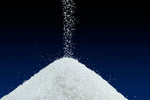
Sodium Overdose in Teenagers
, by Dr. Jeff Pearl, MD, 3 min reading time

, by Dr. Jeff Pearl, MD, 3 min reading time

As parents we often worry about the amount of junk-food our children eat on a daily basis. I am sure I am not the only one who notices the uneaten healthy sandwich in the backpack at the end of the day. In contrast, it is unheard of to see chips or cookies remain. This discovery is often preceded by the statement from your teen ‘I am starving’ can we go to ‘fill in your favorite fast food place’? Although we often worry about the amount of fat or even calories our children consume, we often overlook the amount of electrolytes such as sodium that they ingest. Excess sodium leads to water retention and in many, a subsequent increase in blood pressure or even hypertension. Although we usually worry about this more in adults, the habits we develop as children and teenagers tend to follow us into adulthood where the consequences become more evident.
As I started logging my caloric intake as part of a new health kick and diet, I started noticing how much sodium I was taking in even when eating healthy and never having fast food. The recommended daily sodium intake for a teenager is 1500-2300 mg/day. Most of the sodium we take in is in processed foods, with a smaller part related to the salt shaker on the table. Food manufacturers and restaurants use sodium to add taste to what otherwise may be bland tasting food. They capitalize on the fact that one of our main taste buds is for salt. This connects to our brain giving us a sense of satisfaction. Other spices which are much healthier for us can do the same but are often overlooked.
Teenage boys are the worst offenders taking in on average 4300 mgs of sodium per day; teenage girls average 2900 mgs per day. Now it is true that athletes who sweat a fair amount will lose some sodium, but this loss is usually made up for with just one sports drink. The top offenders of excess sodium in food include processed breads, chicken dinners, pizza, pasta, and deli meats. While for many fast food is a necessity of their busy life, it should be eaten infrequently and in moderation. For example, a Turkey Tom sandwich at Jimmy Johns has 1094 mgs of sodium, a typical medium order of French fries has 260mg, with fries at Burger King having as much as 590 mg. A pack of Cheezits or potato chips has around 320-340 mg of sodium. Even two Oreo cookies have 95mg of sodium, and who can ever stop at two of those? Deli meats, while an overall healthy choice and good source of protein, can be overloaded with sodium. Just two ounces of deli turkey contains between 257-625 mg sodium. Many brands now have a low-sodium version.
Paying attention to your sodium intake, buying low-sodium products, avoiding the salt shaker and using salt substitutes is a good start to avoid sodium overdose and develop better habits for the future. It will take you and your teens taste buds to recalibrate a bit from the sodium overdose but stick with it. Soon you will taste the food itself and other spices you may use, not just salt.